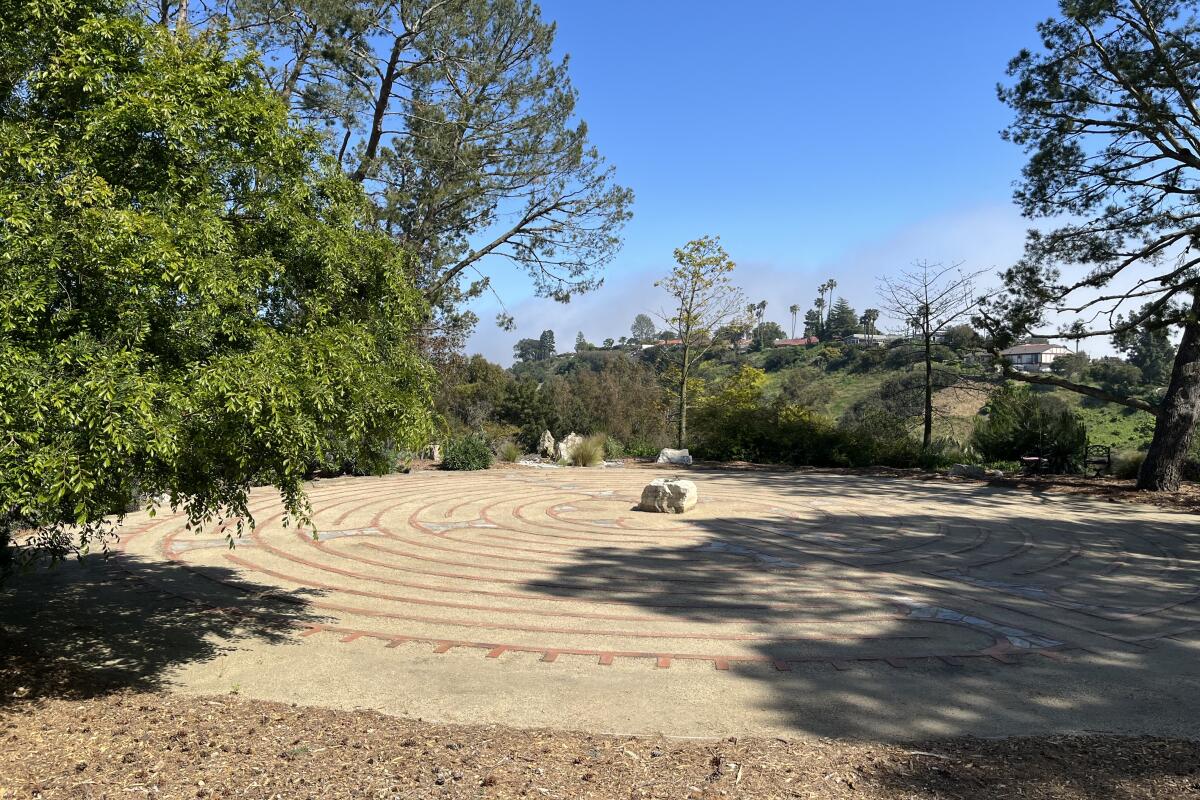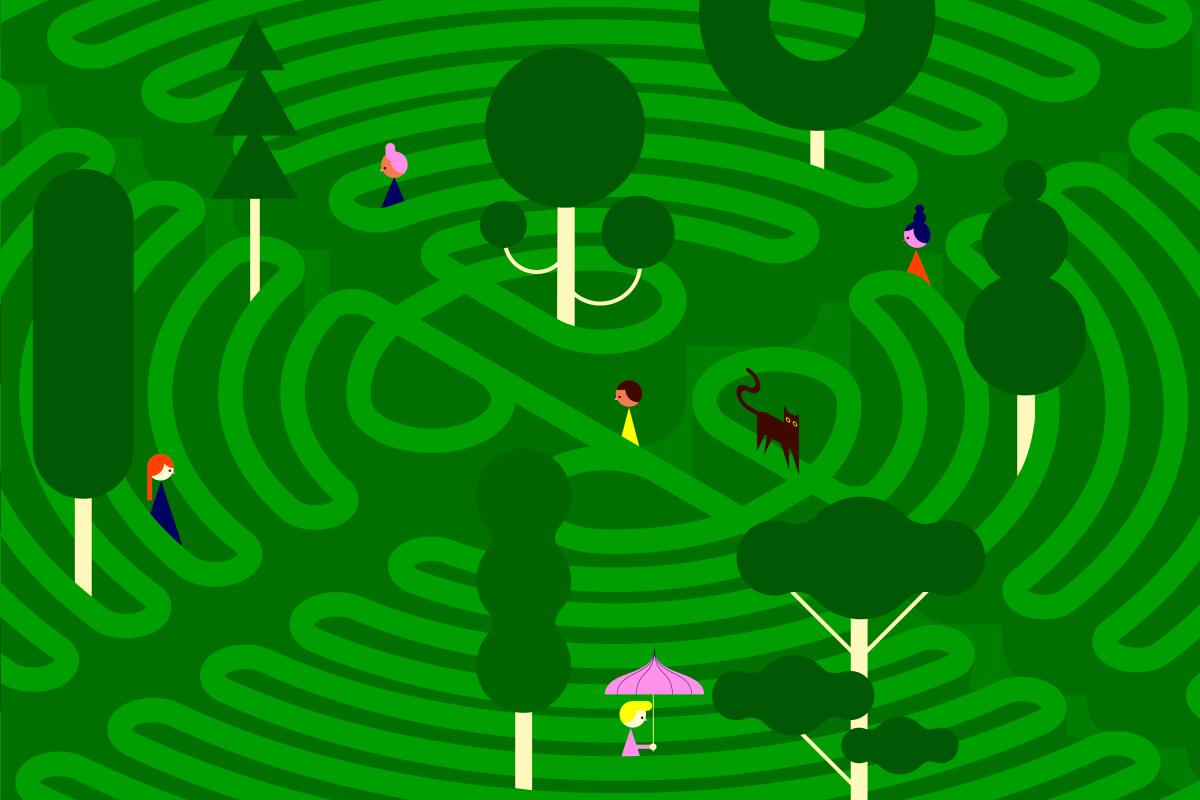
Don’t get lost in the L.A. maze. Find yourself in these 12 hidden labyrinths
- Share via
Chances are you’ve stumbled across a labyrinth sometime in your life. Perhaps it was at a public garden, a nature center or a church. Perhaps you‘ve spotted one tucked in some corner of a canyon or retreat center — an intricate circular path, constructed of stones or laid in concrete, that leads nowhere in particular, except to its own center and back out again.
Labyrinths resemble mazes, but they serve a different purpose. Mazes ask you to problem-solve, to get lost and then find your way out again. Labyrinths offer up only one path — no decision-making necessary.
What they provide instead is a space — sacred space if that’s your thing — to slow down, to walk, to contemplate, to receive.
“It’s a meditation for the restless meditator,” said Katie Bull, a certified labyrinth facilitator who leads group walks at labyrinths around the city.
Chantel Zimmerman, founder and director of Art and Soul Lab, who also facilitates labyrinth walks in L.A., said they can serve as a gateway to seated meditation. “In meditation it always helps to have an anchor. The anchor can be the breath, a mantra or a candle you are gazing at,” she said. “With labyrinths, the anchor is the path.”
There is no one way to walk a labyrinth, but there are strategies that can make your experience more meaningful. Bull offers up the idea of “the three Rs” on her labyrinth walks: Thinking about what you want to release as you walk toward the center, receiving as you stand at the labyrinth’s heart, and then considering what you want to return with as you make your way out and back into the world.
Planning your weekend?
Stay up to date on the best things to do, see and eat in L.A.
It also can be helpful to hold a stone or another symbolic object as you walk. You might leave it in the center, or take it with you after you exit to serve as a reminder of whatever you discovered in the labyrinth that day. Bull also recommends journaling after walking a labyrinth, to help absorb whatever insights you may have gained from your experience.
And if spiritual metaphors do not appeal to you, you might still enjoy labyrinth walking anyway.
Labyrinths appeal to a wide variety of people, said Lauren Artress, canon emeritus at Grace Cathedral Church in San Francisco, and the woman credited with bringing walkable labyrinths to the United States.
“You can be religious and say, ‘I’m walking with God,’ you can be metaphysical and new age and say, ‘I’m walking with source,’ or you can be scientific and say, ‘I’m walking to be meditative and induce the relaxation response,’” she said.
However you plan to use the labyrinth, here are 12 in the L.A. area that you might enjoy.
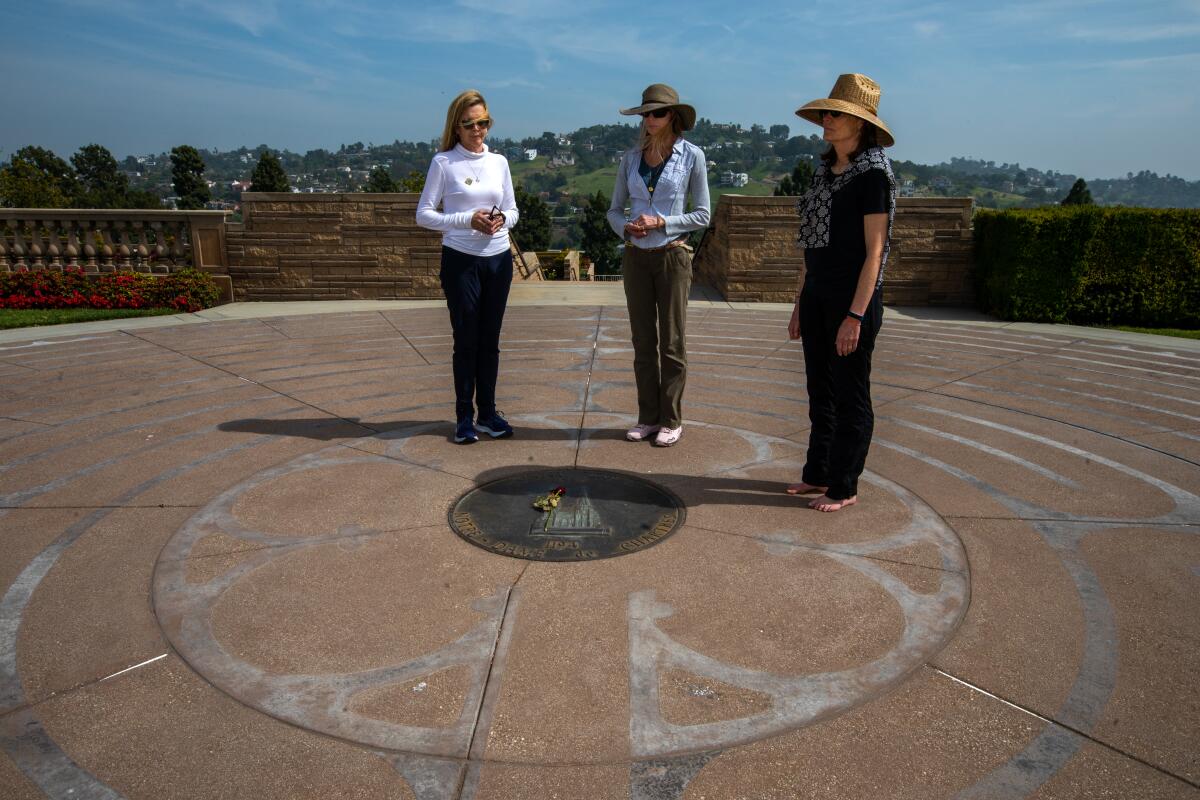
Labyrinth of Forest Lawn Glendale
It may feel strange to seek peace and center at a cemetery, but labyrinth facilitator Katie Bull sees it a different way. “This is sacred space,” she said. “It is a place where we are surrounded by the ancestors.” This is Bull’s go-to labyrinth in the L.A. area, and she has led many group walks here.
Price: Free
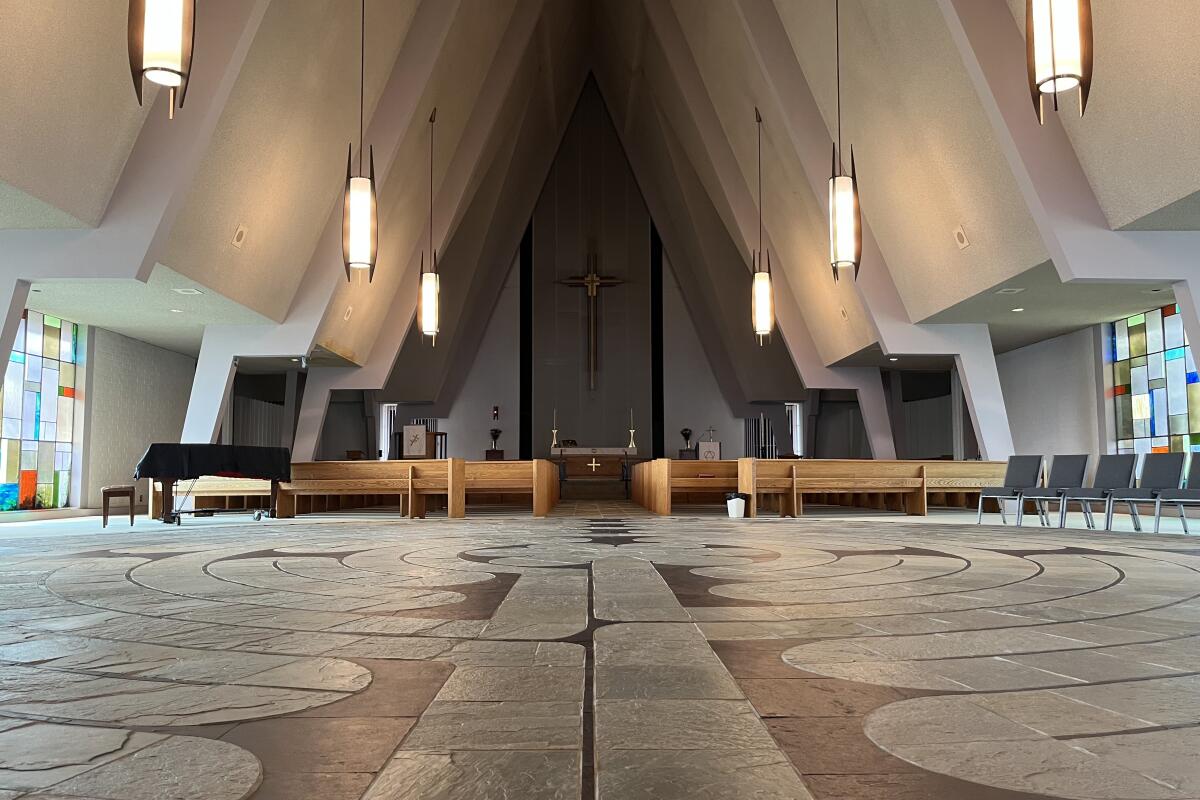
Labyrinth at Christ the King Lutheran Church
“There are different spiritual types,” he said. “Some like to sit and be still, some like to kneel. I always found walking to be when I do my best thinking.”
The labyrinth is open to the public, but because of the copious amount of construction going on around the church currently, you will need to make an appointment ahead of time.
Price: Free
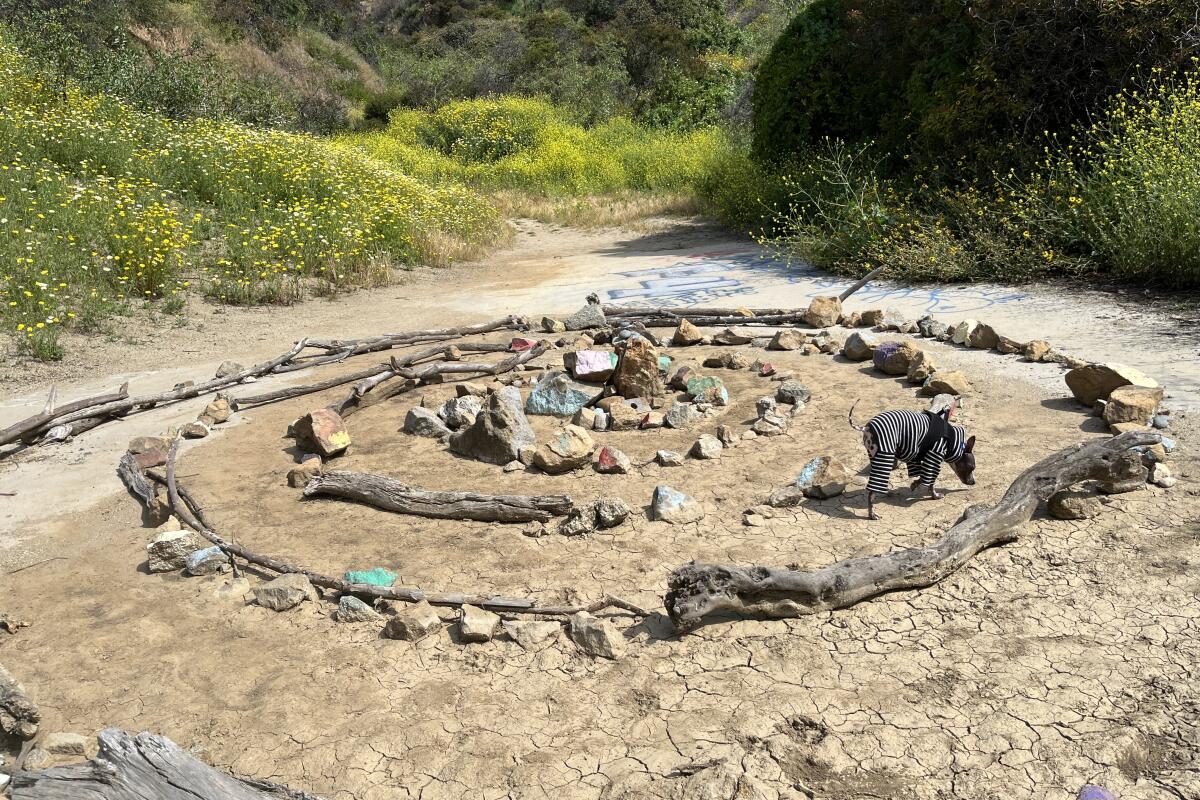
Peace Labyrinth in Runyon Canyon
Cost: Free
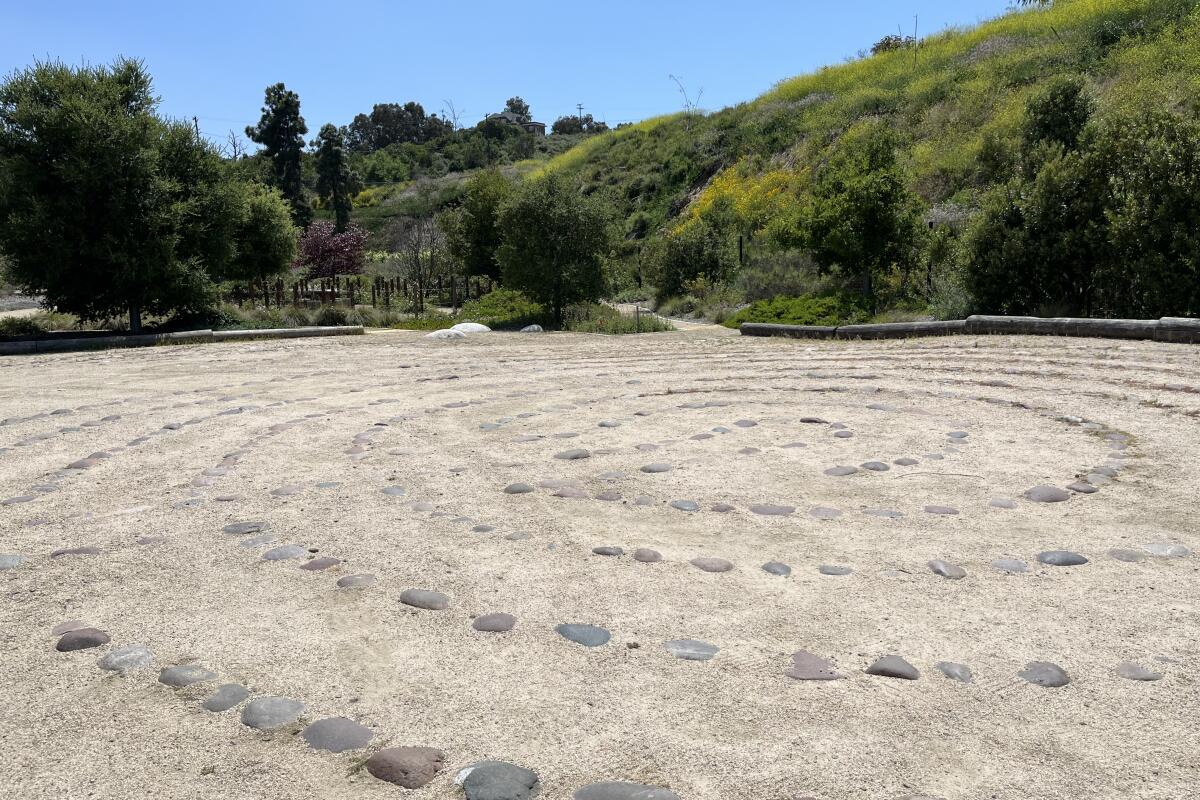
Tree of Life Labyrinth at Stoneview Nature Center
Just to the left of the labyrinth you’ll find a meditative garden with artworks, tables and benches and even a few very long logs to lie down, stretch and soak up the natural landscape.
Price: Free
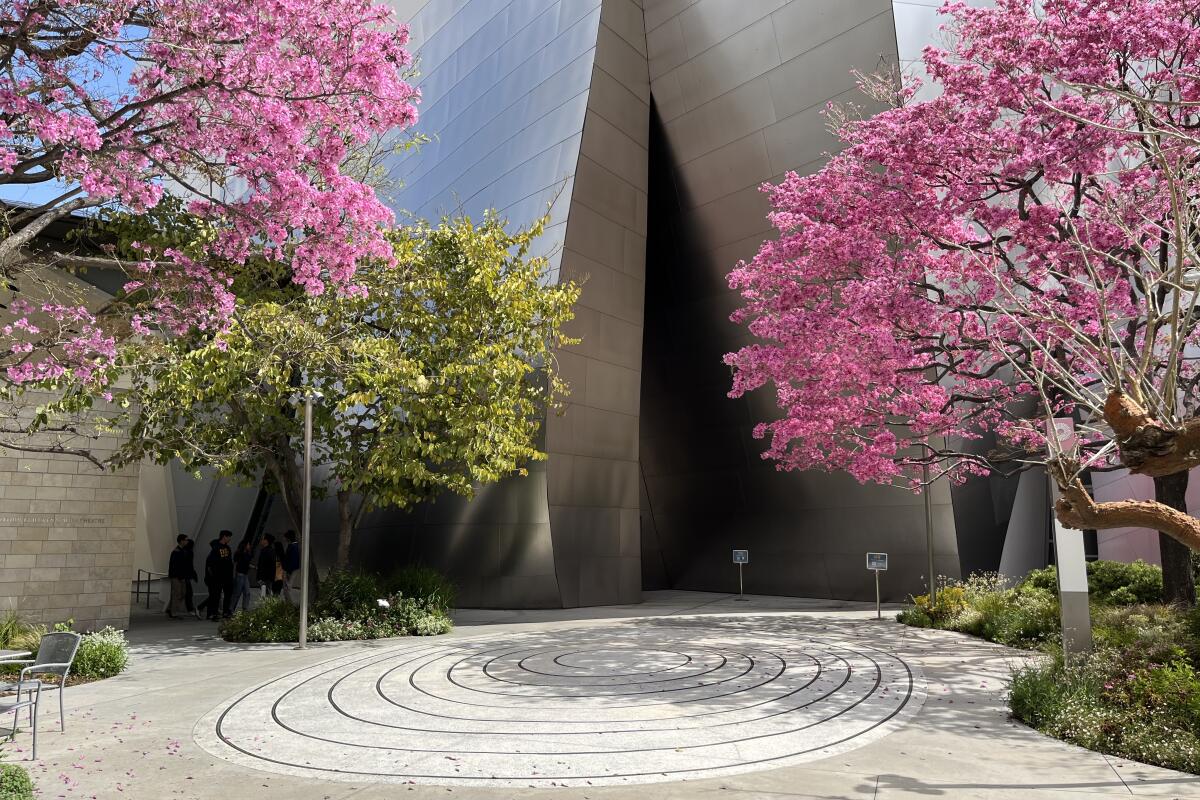
Spiral at the Blue Ribbon Garden above the Walt Disney Concert Hall
Price: Free
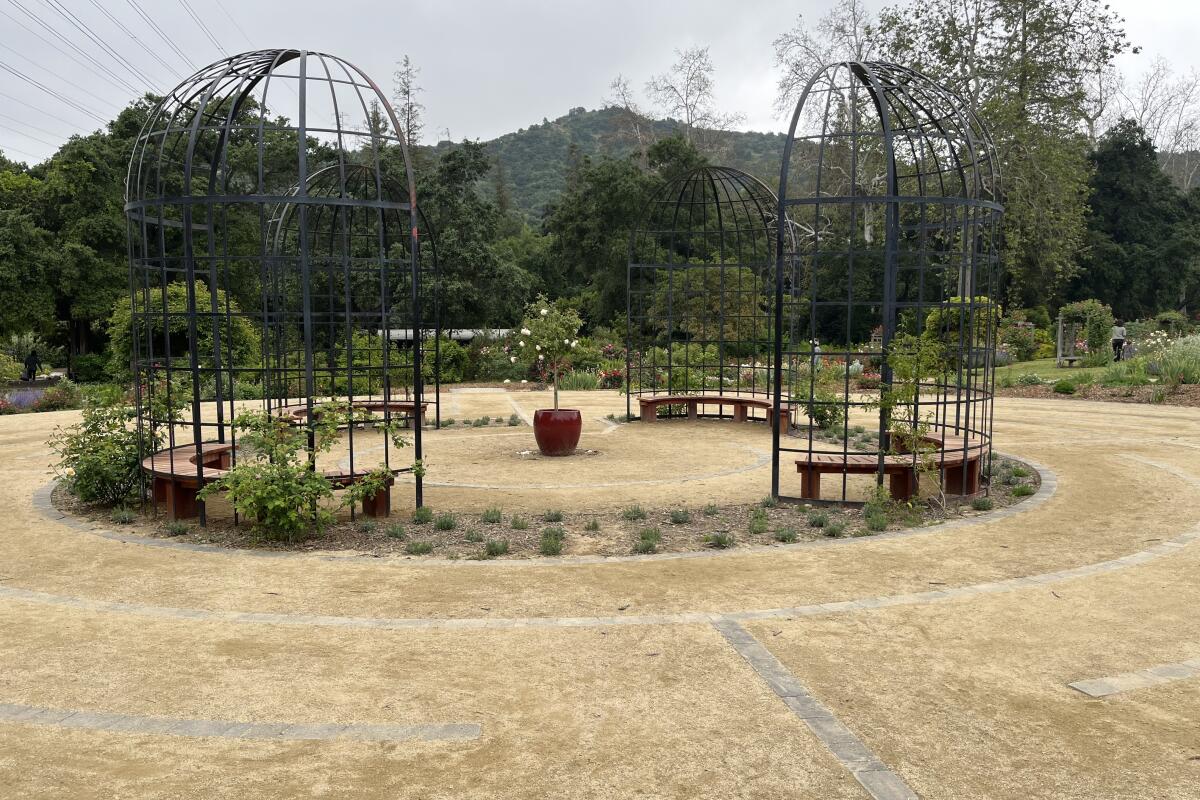
The Rose Garden Labyrinth at Descanso Gardens
Price: $15 adults, $11 seniors (65 and older) and students with ID, $5 children (5–12 years old), free for children 4 years and younger
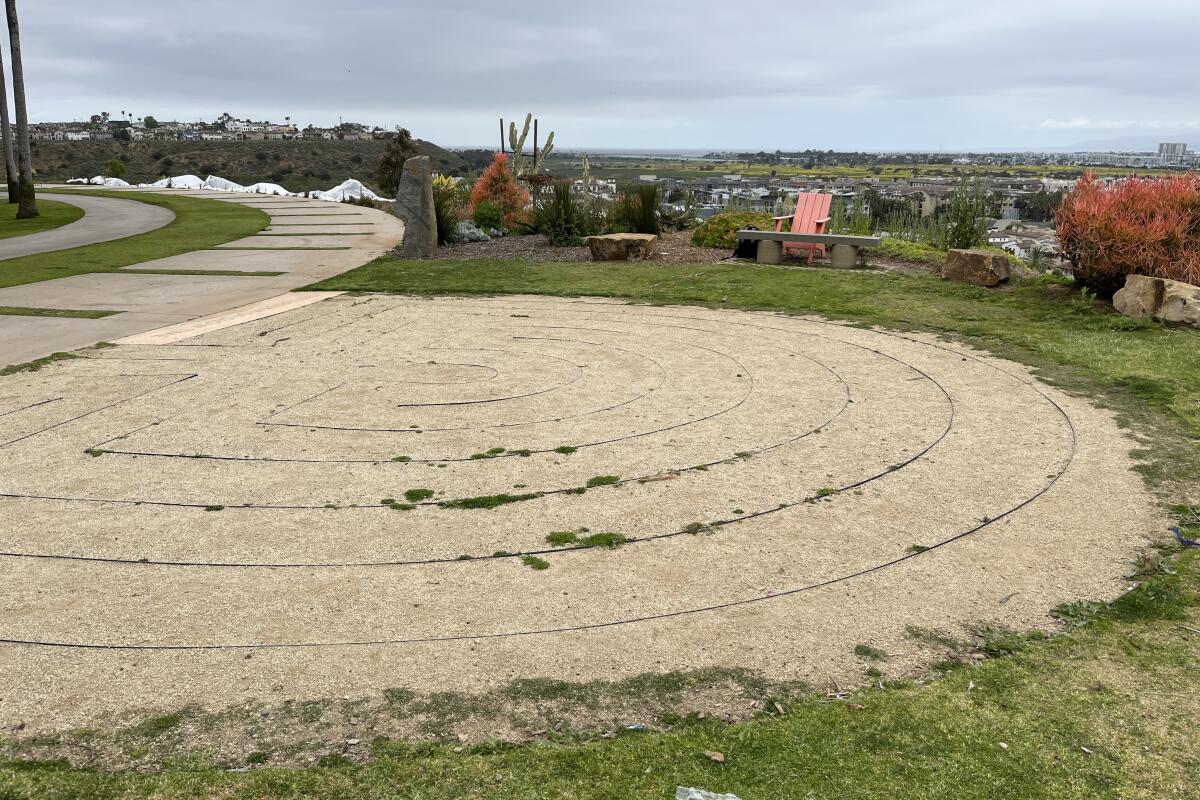
The Labyrinth in the Garden of Slow Time at Loyola Marymount University
Harris often brings his students to the labyrinth to contemplate the different timescales on display — geologic, historic, recent. “I call it a slow time machine,” he said.
You don’t have to be affiliated with the university to use the labyrinth. To get there, park in the university’s Drollinger Parking Plaza, cross the street, and then hang a left after you pass the circular William H. Hannon Library.
Price: Free
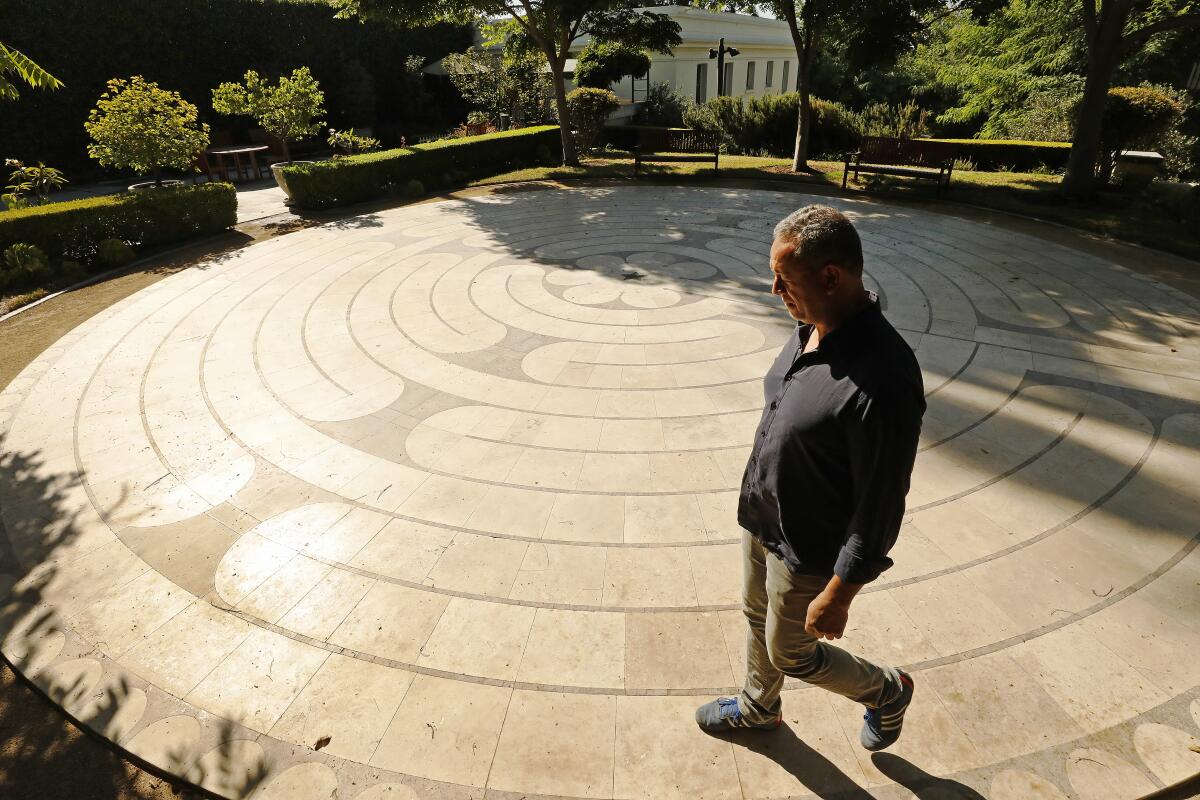
The Peace Awareness Labyrinth and Meditation Garden
Price: $6

Labyrinth at Prince of Peace Church
The labyrinth is open to the public and has gotten a fair amount of use since it was installed in 2006. “We’ve had mothers’ groups use it, school groups have come, people in the neighborhood, people in the church,” said Father Rand Reasoner. “Some of them I’m sure are Christians and some of them I’m sure are not — and that I think is the beauty of this tool.”
Price: Free

St. Francis Episcopal Church Labyrinth
At the center of the labyrinth you’ll find a small bench and 10 tree stumps arranged like stools — the perfect spot for collective contemplation or private meditation. While you’re there, explore the rest of the church’s beautiful property, particularly the enclosed rose garden with a fountain in the center.
Price: Free
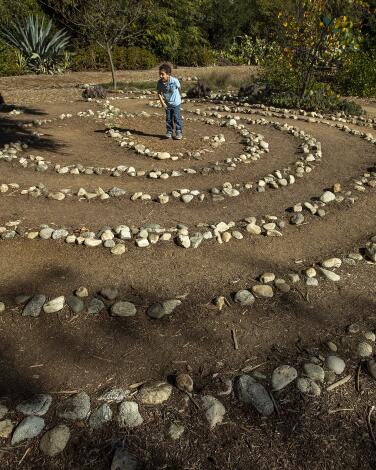
Labyrinth at Arlington Garden
Price: Free
Sign up for The Wild
We’ll help you find the best places to hike, bike and run, as well as the perfect silent spots for meditation and yoga.
You may occasionally receive promotional content from the Los Angeles Times.
